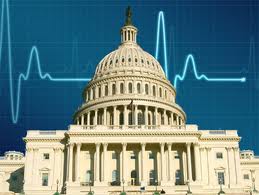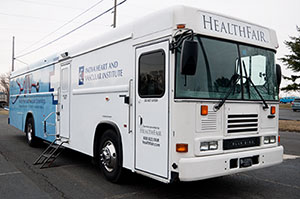Long-term Care for Seniors
Here is an informational snapshot of long-term services and support (LTSS) for seniors in the United States. This includes information about the number and proportion of seniors who will need LTSS because of physical and cognitive impairment, the role of unpaid family caregivers in providing the majority of LTSS, the role of Medicaid (not Medicare) as the primary payer for LTSS, the shifting of Medicaid spending from institutional-based care toward community-based care, and the fact that 35% of US adults 40 years or older say they have set aside money for their long-term needs.
Slideshow about long-term care for seniors… Continue reading
Improper Use Of Prescription Drugs Costs $200 Billion A Year
 The U.S. spends $200 billion each year — about 8 percent of the nation’s health care tab — on medical care stemming from improper or unnecessary use of prescription drugs.
The U.S. spends $200 billion each year — about 8 percent of the nation’s health care tab — on medical care stemming from improper or unnecessary use of prescription drugs.
Much of those costs result from unneeded hospitalizations or doctor visits, according to the study by the IMS Health’s Institute for Healthcare Informatics, which provides data and other consulting services to the health care industry. Medical costs are driven up by patients who don’t get the right medications or fail to take their drugs, the misuse of antibiotics, medication errors and inadequate oversight when patients take multiple drugs.
Even though the use of lower cost generic drugs is high, further increases could shave $10 billion in costs, the report says.
HIV Testing in the U.S.
 HIV testing is integral to HIV prevention, treatment, and care. Knowledge of one’s HIV status is important for preventing the spread of disease. Studies show that those who learn they are HIV positive modify their behavior to reduce the risk of HIV transmission.1, 2 Early knowledge of HIV status is also important for linking those with HIV to medical care and services that can reduce morbidity and mortality and improve quality of life.1, 2
HIV testing is integral to HIV prevention, treatment, and care. Knowledge of one’s HIV status is important for preventing the spread of disease. Studies show that those who learn they are HIV positive modify their behavior to reduce the risk of HIV transmission.1, 2 Early knowledge of HIV status is also important for linking those with HIV to medical care and services that can reduce morbidity and mortality and improve quality of life.1, 2
The Story of Medicare
Produced by the Kaiser Family Foundation this video highlights the Medicare program’s evolution from its origins to the current day. The seven-minute video also highlights the program’s impact on the 50 million elderly and disabled Americans it serves today, as well as the fiscal challenges it faces to ensure its long-term sustainability.
The Toll of Depression – Getting Your Life Back
Marilyn Franz talks about working to get her life back.
Yes, there are tests we can do to help your doctor help you.
Physician Compare – Medicare Site Updates
 Medicare added new features to its Physician Compare website on June 27, 2013 as it prepares to start including quality data on thousands of doctors.
Medicare added new features to its Physician Compare website on June 27, 2013 as it prepares to start including quality data on thousands of doctors.
The federal health care law requires the Centers for Medicare & Medicaid Services to publish performance data on doctors, including how patients rate them, how well the physicians’ medical interventions succeed and how well they follow clinical guidelines for basic care. The site has been up since 2010, but contained only basic information about doctors and group practices, such as their addresses, specialties and clinical training.
The updated site expands the way people can search… Continue reading
Health Law Won’t Bring Prices Down For Patients
 At a Capitol Hill hearing in June 2013, journalist Steven Brill, who examined the issue of the high cost of health care in a much quoted March 2013 Time magazine article, told Senate Finance Committee members that President Barack Obama’s health care law will do very little to lower prices for consumers.
At a Capitol Hill hearing in June 2013, journalist Steven Brill, who examined the issue of the high cost of health care in a much quoted March 2013 Time magazine article, told Senate Finance Committee members that President Barack Obama’s health care law will do very little to lower prices for consumers.
Joined by a panel of health policy experts at the hearing to explore ways to make health pricing more transparent, Brill said that while he views efforts to disseminate prices for health services to consumers favorably, he believes that increasing transparency has its limits. “[Transparency] starts the conversation… Continue reading
Medicare Spending Variations in States
 The idea that uneven Medicare health care spending around the country is due to wasteful practices and overtreatment—a concept that influenced the federal health law – took another hit in a study published in May 2013. The paper concludes that health differences around the country explain between 75 percent and 85 percent of the cost variations.
The idea that uneven Medicare health care spending around the country is due to wasteful practices and overtreatment—a concept that influenced the federal health law – took another hit in a study published in May 2013. The paper concludes that health differences around the country explain between 75 percent and 85 percent of the cost variations.
“People really are sicker in some parts of the country,” said Dr. Patrick Romano, one of the authors.
That’s a sour assessment for those hoping to wring large savings out of the health care system by making it more efficient. Some, such as… Continue reading
Benefits of Healthfairs are Questioned
 Hospitals hoping to attract patients and build their brands are teaming up with medical-screening companies to promote tests aimed at consumers worried about potentially deadly heart disease or strokes.
Hospitals hoping to attract patients and build their brands are teaming up with medical-screening companies to promote tests aimed at consumers worried about potentially deadly heart disease or strokes.
What their promotions don’t say is that an influential government panel recommends against using many of the tests on people without symptoms or risk factors. The panel says such screenings find too few problems to outweigh their drawbacks, which include false positive results, follow-up procedures and potentially unnecessary surgery. Other medical experts warn that the tests could needlessly raise health-care spending.
Inova Health System, one of the Washington, D.C., region’s largest… Continue reading
Value and Quality – Not Volume
 For decades, reformers of U.S. healthcare have sought to change how doctors and hospitals are paid to reward quality and efficiency – efforts that accelerated as a result of the Obama health care overhaul. But surprisingly little progress has been made to date, a consortium of large employers reported in March 2013.
For decades, reformers of U.S. healthcare have sought to change how doctors and hospitals are paid to reward quality and efficiency – efforts that accelerated as a result of the Obama health care overhaul. But surprisingly little progress has been made to date, a consortium of large employers reported in March 2013.
Only 10.9 percent of health care spending last year by employer-sponsored plans was based on “value,” as opposed to “volume,” or the number of services performed, according to the study by Catalyst for Payment Reform (CPR), a nonprofit group which represents 21 U.S. employers, including Verizon, Walmart,… Continue reading

